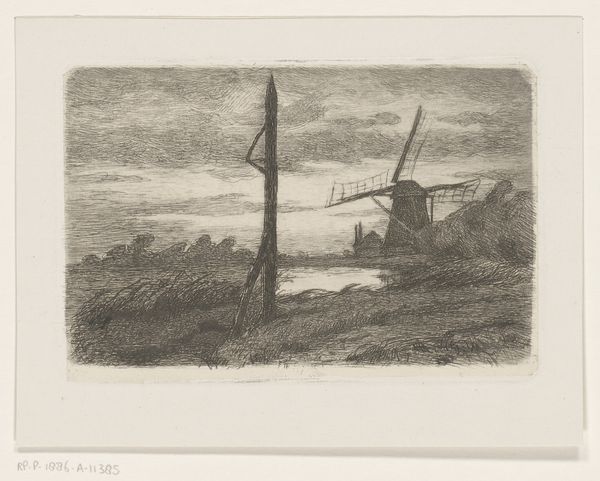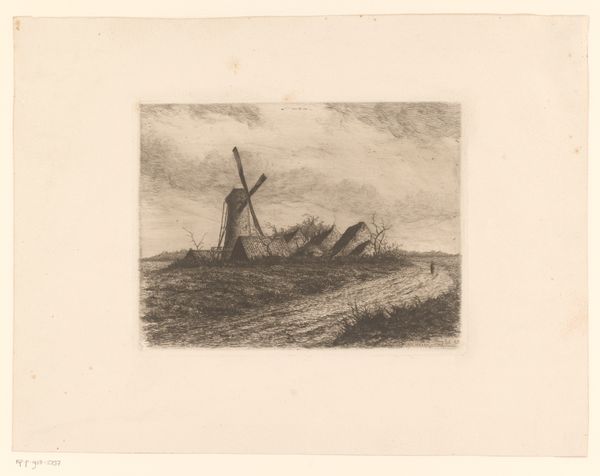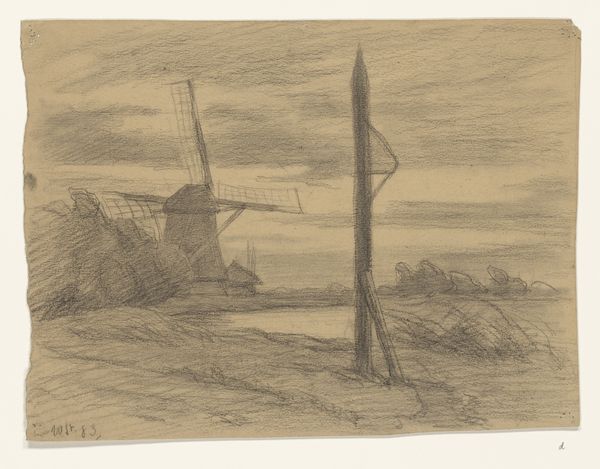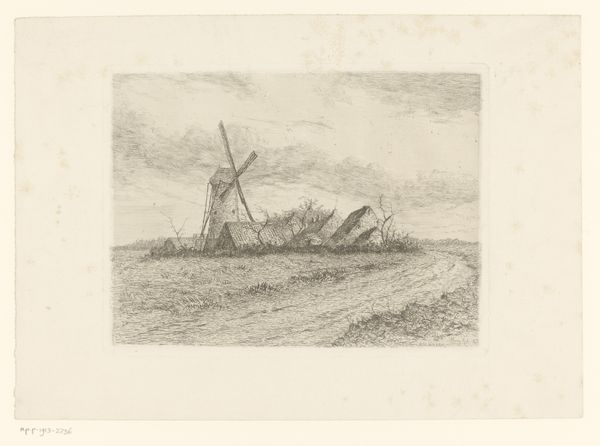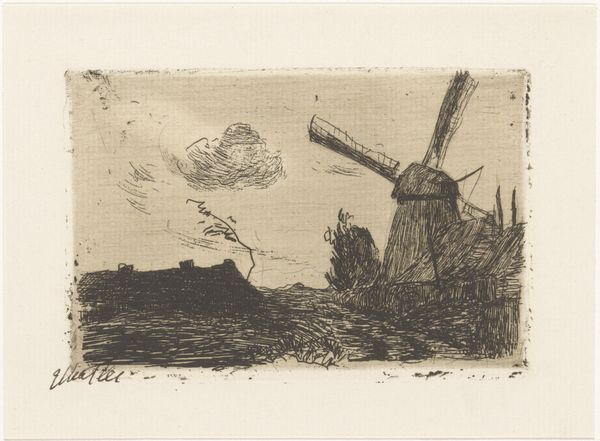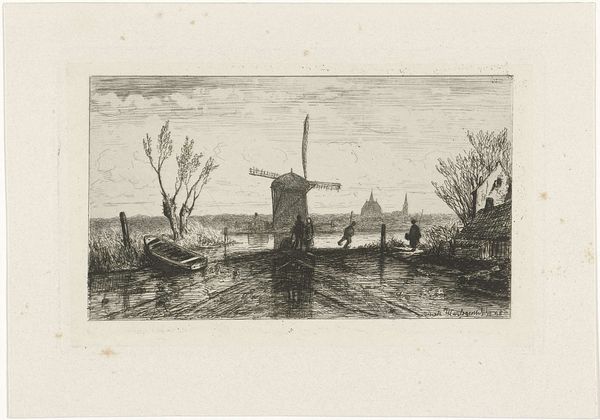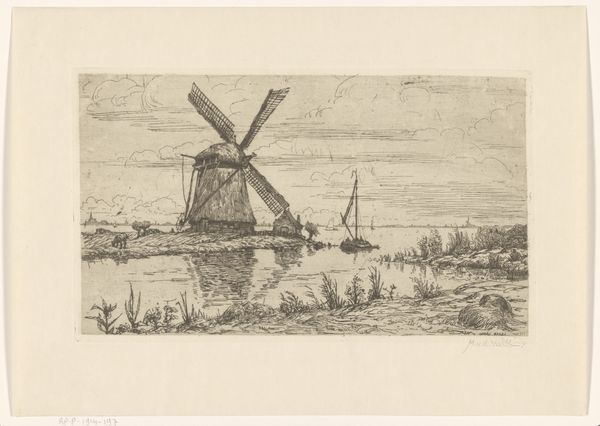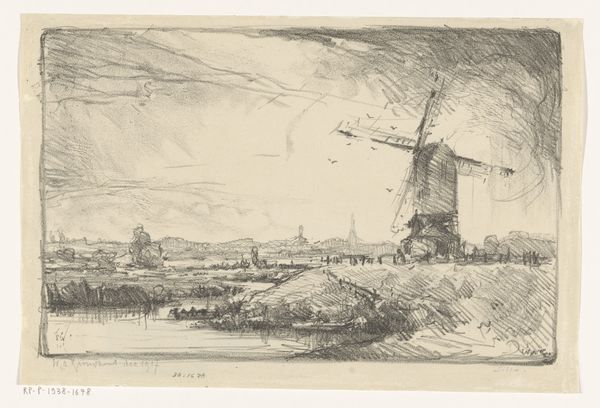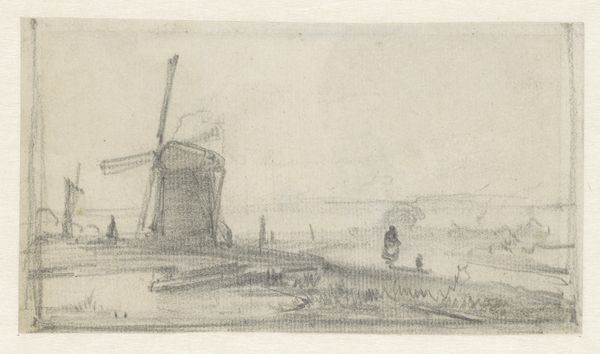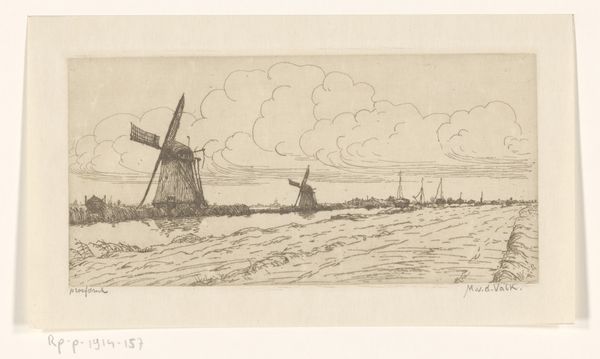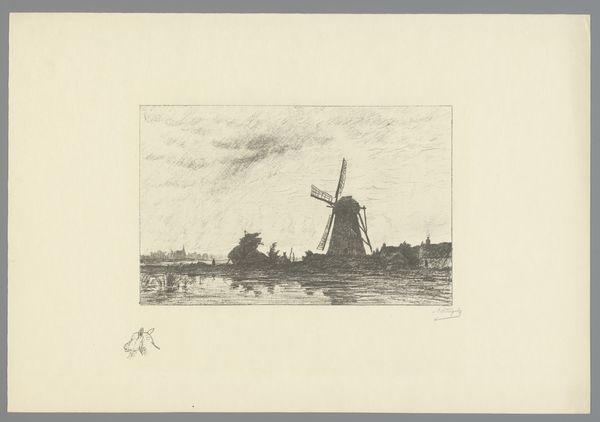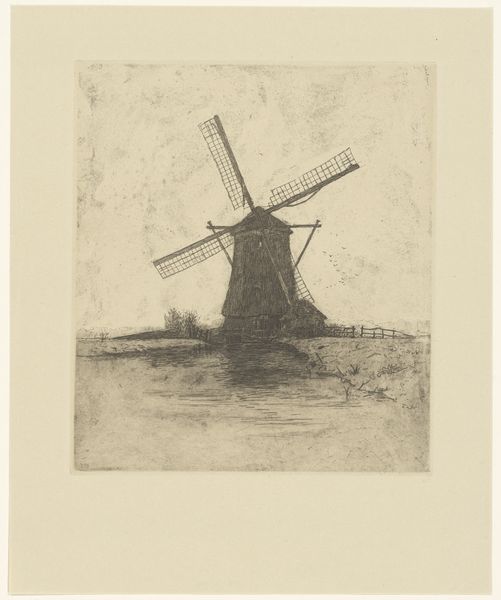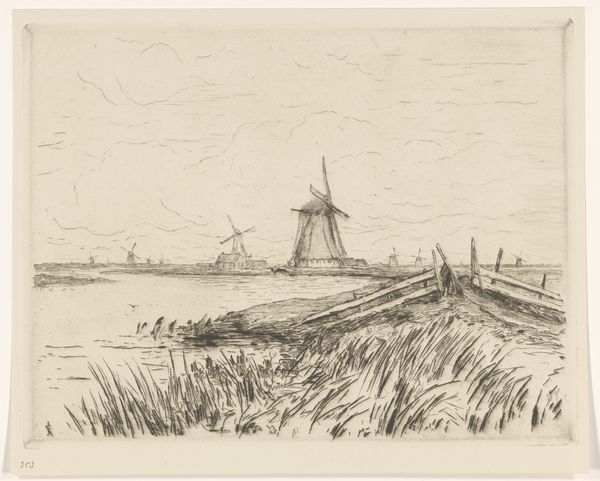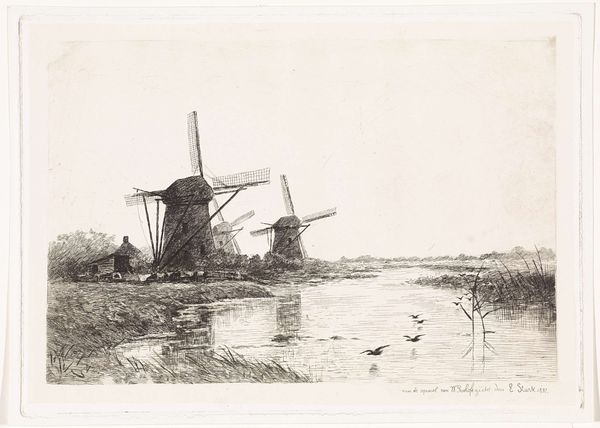
print, etching
#
dutch-golden-age
# print
#
etching
#
landscape
#
etching
#
pencil drawing
#
realism
Dimensions: height 100 mm, width 145 mm
Copyright: Rijks Museum: Open Domain
Curator: This etching, titled "Riviergezicht met molen," was created by Wilhelmus Johannes Steenhoff sometime between 1873 and 1886. The Rijksmuseum is its current home. It captures a riverside scene dominated by a windmill. Editor: There's a real sparseness to it. The limited tones, achieved through etching, create this haunting stillness. I'm drawn to the textural contrasts - the choppy, almost frantic strokes that describe the grass against the smooth paper, it creates an atmosphere. Curator: It does capture the Dutch landscape quite directly, adhering to a tradition of Realism. The windmill itself…it is an iconic symbol of the Netherlands, of course. A visual shorthand for Dutch identity. What I find curious, however, is the weathered post in the foreground, perhaps signaling the transient nature of rural life. Editor: That's interesting! It seems that the artist’s selection of materials is almost in direct conversation with your point. This etching wouldn't exist without industrial advancements – the refinement of metalworking, printing technologies, even paper production itself contributes meaning! This links it so concretely to its socio-economic conditions of creation. The etching medium also suggests something about replication, about accessibility. It’s not a unique painting, but an image designed to be disseminated more widely. Curator: Absolutely, and that availability also meant the spread of symbolic vocabulary and ideologies associated with the rural and national imagery. The image almost reinforces and validates these national values. Consider, even now, the nostalgic value associated with this depiction, despite the intense changes in Dutch society and technology since. Editor: Yes! The accessibility challenges this common, exclusive focus on oil painting from that time and really grounds this conversation in accessibility through media and technique. There is value, and often much meaning, embedded in these mediums because it makes these representations more widely consumable and part of common visual culture. Curator: Precisely! It is remarkable how the artwork acts not only as an object of aesthetic admiration but also a compelling vessel of history, identity, and technique. Editor: It makes you consider the weight and meaning of production, medium, and widespread representation.
Comments
No comments
Be the first to comment and join the conversation on the ultimate creative platform.
